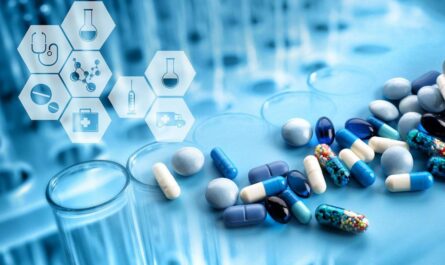Current Scenario of Medical Equipment Financing Industry
The healthcare sector across the globe is facing tremendous challenges in terms of high cost of medical equipment and maintaining existing medical infrastructure. From advanced MRI machines to basic patient monitors – all medical devices come at a very high price which most public and private healthcare facilities find difficult to afford through their budget or reserves. This is where medical equipment finance has played a crucial role in enabling hospitals, diagnostic centers and clinics to continue delivering quality and affordable care.
Medical equipment finance or leasing provides a flexible payment solution that allows regular instalments over the usage period, instead of a one-time substantial purchase payment. Various customized financing plans are available from 3 to 7 years depending on the lifespan of the specific equipment. This improves cash flow management and budgeting for healthcare organizations. It also prevents straining the capital expenditure budgets in one fiscal cycle.
Financing Mechanisms and Key Players
There are two main mechanisms used globally for medical equipment finance – loan and leasing. In loan financing, the healthcare provider borrows money from the financing company/bank to purchase the equipment and then repays it over the tenure with interest amounts added. In leasing, the equipment legally remains the property of the lessor or financing firm and the user pays regular rental fees to use it.
Major players offering these financing options include pharmaceutical and equipment giant GE Healthcare with their GE Capital business, Siemens Financial Services, Koninklijke Philips Finance, Healthcare Technology Finance from Citibank, Barclaycard Healthcare Equipment Finance and Oxford Finance LLC. These companies evaluate project feasibility, structure tailored repayment plans based on equipment type and arrange funds directly with healthcare facilities.
Importance in Developing Nations
Medical equipment finance plays an even more crucial role in developing nations where availability and affordability of quality healthcare remains a massive challenge. Public hospitals and clinics in these countries have very limited capital budgets and rely majorly on government subsidies which are also scarce. Financing allows them to acquire advanced diagnostic and surgical devices to offer specialty treatments without depending entirely on grants or donations.
Moreover, these developing markets present huge opportunities for technology advancements to bridge care gaps. Financing propels these nations on the path of digital healthcare transformation by making quality medical devices within financial reach. It plays a catalyst role in their journey towards universal health coverage goals. For instance, Oxford Finance partnered with diagnostic chain Thyrocare in India to fund expansion plans enabling screening tests to reach remotest areas at nominal rates.
Positive Industry Outlook and New Models
The medical equipment financing industry has grown steadily over the past decade and shows strong potential for further growth. It is projected to nearly double from $44 billion in 2016 to $85 billion by 2023 according to a Grand View Research report. Meanwhile, Asia Pacific region is estimated to exhibit the highest CAGR during the forecast period owing to increasing healthcare infrastructure in emerging economies.
Along with traditional offerings, new flexible financing models are also emerging in response to the evolving healthcare landscape. Examples include usage-based payment plans based on number of scans performed or patients treated alleviating upfront capital commitment risks. Equipment-as-a-service model is also gaining traction where clients pay only for usage of the diagnostic tools or devices on a subscription or pay-per-use basis without ownership. This allows hospitals to harness advanced technologies without large capex outlays.
Regulatory Support and Risk Mitigation
Governments across several countries have introduced supportive regulations and incentives to accelerate the medical equipment finance industry recognizing its value-addition to their citizens’ access to care. For instance, tax exemptions on interest incomes for lessors and accelerated depreciation benefits for lessees in India. In the US, backing from agencies like Center for Medicare and Medicaid Services helps qualify more financing programs and payment structures.
At the same time, prudent risk management is equally important for long term industry sustainability. Financing companies conduct thorough technical, financial and environmental due diligence while appraising projects. They also maintain healthy risk diversification across geographies, healthcare segments and technology types. Close monitoring during the tenure further safeguards equipment performance and timely repayments. With the right underwriting and risk governance framework, medical equipment finance is poised for continued development worldwide.
Medical equipment finance has emerged as a pivotal enabler in today’s resource-strained healthcare settings globally. It allows more patients to access advanced diagnostic tools and specialty treatments through flexible repayment plans. This industry also acts as a catalyst supporting developing nations in their digital health transitions and universal coverage agendas. With favorable regulations, innovations in offerings and robust risk approaches – medical equipment financing industry is well-placed to continue playing its transformative role.
*Note:
1. Source: Coherent Market Insights, Public sources, Desk research
2. We have leveraged AI tools to mine information and compile it.



